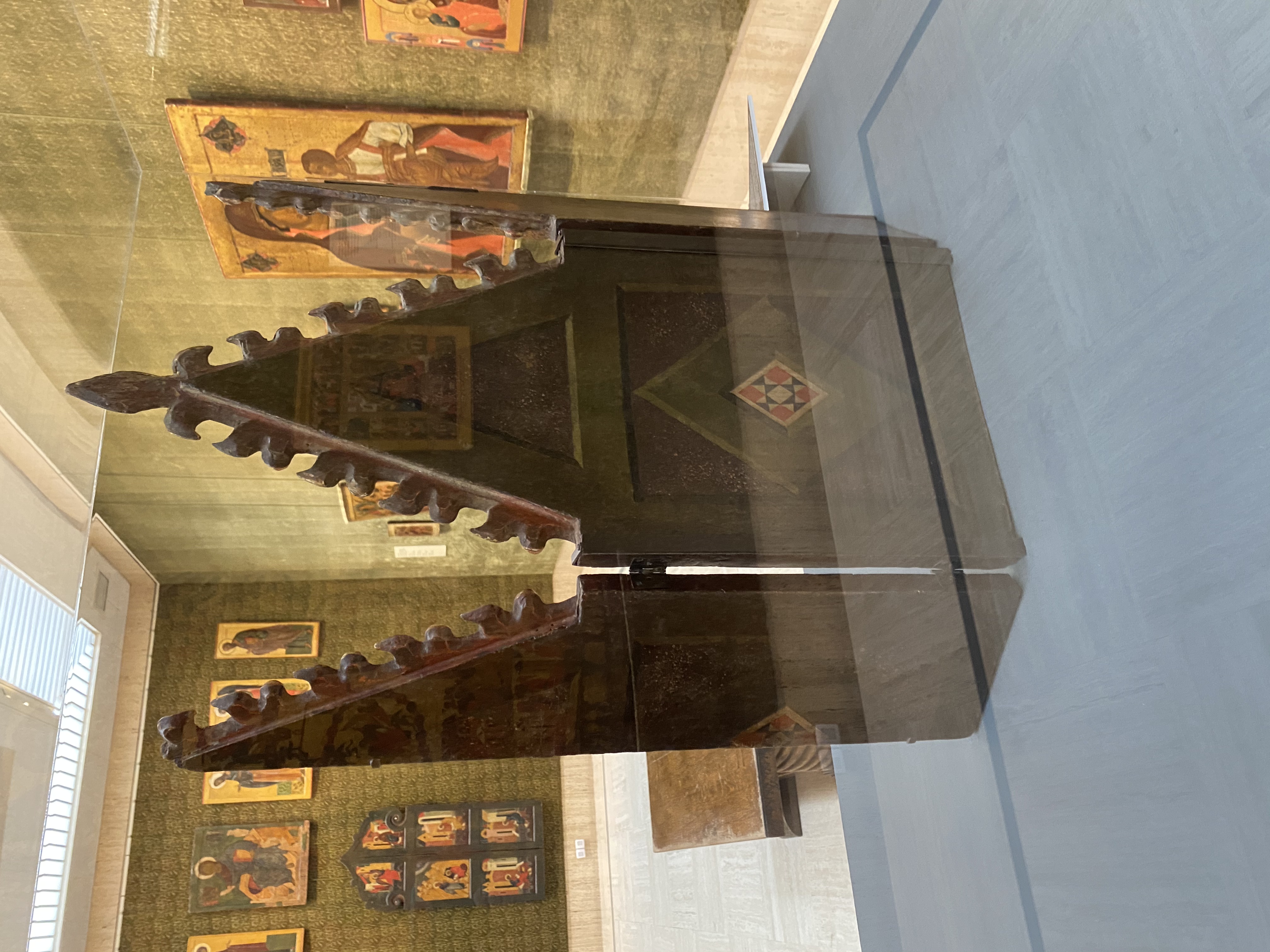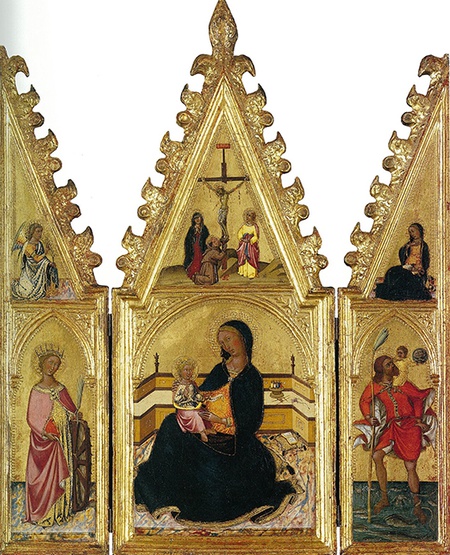Work of the Week #16

Niccolò di Buonaccorso, The Madonna of Humility with St. Catherine of Alexandria and St. Christopher, The Annunciation, and the Crucifixion, c. 1370-75
The Timken’s collection, while small, has numerous strengths. One of those strengths is the quality of its Sienese gold-ground panel paintings. Having just written that sentence, I feel a little like a baseball enthusiast who raves about the promising left-handed pitchers being developed in the farm system of a major-league club. Such specialized knowledge isn’t apt to register significantly with general audiences, but it communicates something of value to dedicated followers, and it means a lot to professionals. In our case, this fact translates into an awareness that few museums can tell the story of the early Renaissance better than the Timken. Especially when it comes to the innovative group of artists who worked in Tuscany starting in the late 13th and through the 14thcenturies, our collection offers uncommon insights.
Let’s start with the triptych of The Madonna of Humility that has been in San Diego since 1967. The artist who painted this devotional work was one of several leaders to emerge from Siena during the trecento (1300s). Following in the large footsteps of Duccio (c. 1255-1319) and Simone Martini (c. 1284-1344), and likely trained in the workshop of Jacopo di Mino del Pelliccaio (active 1344-1389), Niccolò di Buonaccorso (c. 1348-1388) had a brief but well-documented career in which he received commissions to paint everything from book covers to frescoed ceilings. He made chapel decorations for Siena’s main cathedral and images for nearby churches, such as the one in Costalpino completed shortly before his death. His work can be found in major museums throughout the world today. For example, elements from a single large altarpiece dedicated to the life of the Virgin are scattered in collections at the National Gallery (London), the Metropolitan Museum of Art (New York), and the Uffizi Gallery (Florence). The Timken owns a large panel, The Madonna and Child Enthroned (1387), by the artist--acquired in 1998--which likely was once part of a major, multipart decoration. Together with The Madonna of Humility, its presence in San Diego provides a rare opportunity to compare works in different scale from two different moments in the career of a Sienese artist.
The Madonna of Humility is small and intense. This little triptych--a three-part, hinged image--was almost certainly intended for private use by a wealthy patron. Its interior is divided into six zones: Saints Catherine and Christopher are painted as fully modeled, colorful figures occupying the two wings while reciprocal narratives of the Annunciation and Crucifixion frame the upper register of this ornately gabled composition. The main, central scene shows Mary and the infant Jesus in a domestic interior. We appreciate the early Renaissance artist grappling with how to represent space in convincingly illusionistic terms. The presence of a basket of sewing on a low bench behind the figures gives the work its iconographical title. Mary is represented as having just put down her humble, daily chores to attend to the baby in her lap. It is worth noting that, most of the time, this glimmering image would not have been seen, even by its owner. The triptych would have been closed like a book except when being used as a focus for prayer. The exterior of the triptych is painted with a simple trompe l’oeil (trick the eye) decoration that belies its resplendent interior.
If trecento scholars are correct, Niccolò di Buonaccorso was in his early twenties when he painted this enduring work of art. Today, 650 years later, his work remains something powerful to behold. Like a rookie southpaw striding out of the bullpen for his big-league debut, The Madonna of Humility signals youthful confidence and promises great things to come.
